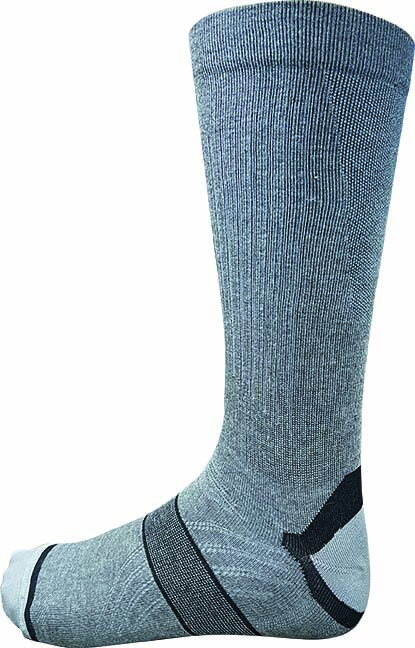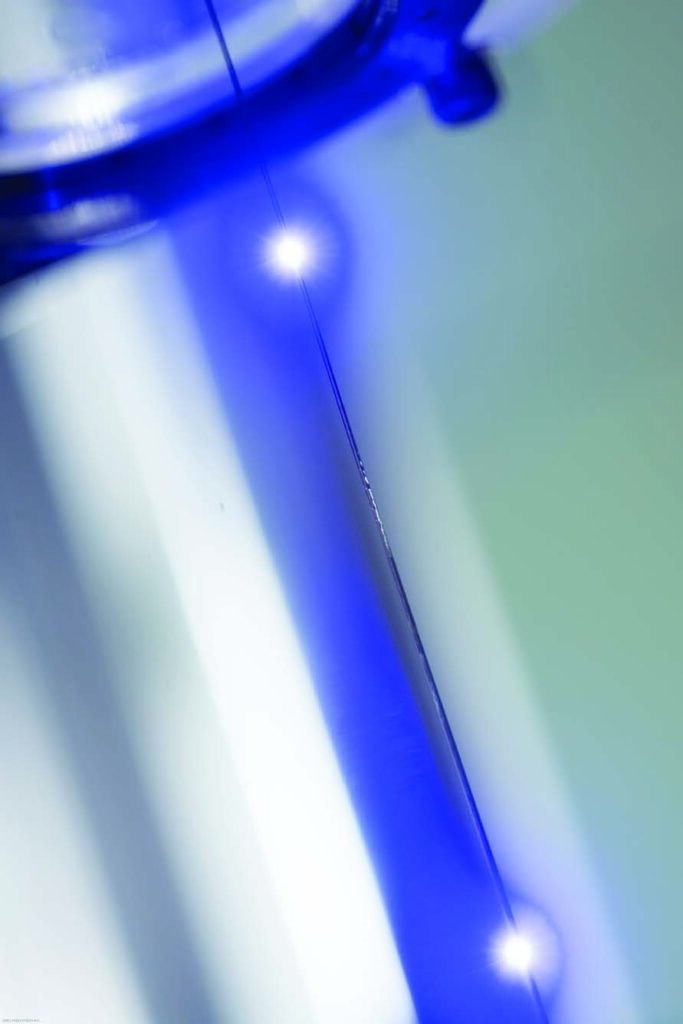
The health and wellness market has been among the first to embrace advances in smart yarns and to take advantage of the versatility of engineered textiles. Supreme Corp., a producer of high-tech textiles and electrically conductive yarn and sewing thread, has created a revolutionary fabric called Thermoregulating Therapeutic Smart Fabric (TTSF), which it says can promote healing and enhance human performance. The company, based in North Carolina, recently announced a collaboration with Advanced Functional Fabrics of America (AFFOA) to incorporate AFFOA’s monofilament yarn embedded with tiny LED lights.
“We are using this with our ‘upconversion nanoparticles’ in our TTS yarn to heal the body from incisions, infections, broken bones and other medical conditions,” says Matt Kolmes, Supreme’s CEO.
The new TTS-Nano-Hybrid LED Yarn will be capable of energy harvesting to support both thermoregulation and therapeutic applications. The material can be used in base layers, socks, gloves and sleeves in various smart textile applications, including medical uses and therapeutic textiles.
But as with many breakthrough technologies, it was built on previously established practices—in this case, the use of light therapies in medical treatments. For some time, photodynamic therapy (PDT) has been widely accepted as a treatment for dermatological conditions, including some cancers, but this has involved using an external light source. The TTS technology harvests the body’s own heat energy, converts it to light energy and reflects it back onto the body.

Foundational change
As bacterial resistance is a problem during the process of healing from infected wounds, PDT has offered a useful treatment, due to its broad-spectral antibacterial activity and nonselective action, which makes it possible to deal with antibiotic resistance.
PDT, the most common type of the photosensitizer-based therapies, was accidentally discovered in 1900 by Oscar Raab, who recognized that microorganisms were killed when exposed to light but not when they were kept in the dark.
In recent years, interest in the anti-infective effects of PDT has been revived, often proposed as a therapy for bacterial, fungal and viral infections, in which case it is described as antimicrobial PDT (aPDT), or photodynamic inactivation. Topical PDT is widely used in skin diseases, and it is also an effective method for skin rejuvenation due to the immunomodulatory and antimicrobial effects.
Supreme’s product also provides light therapy, but in the past, an external energy source was needed to activate the light. “Now they can use the energy from their body,” Supreme’s principal scientist, Rakkiyappan Chandran, Ph.D., says.
“There’s an acceptance of PDT generally, but people have to buy a separate device and the reason they buy it is that in some countries they are treating skin disorders, in part, with this visible light,” Kolmes says. “You used to get it only at the hospital, but now it’s a home therapy, and it’s over the counter.
“We had thought of buying these lights and to sell the light with the textile, but it was trying to manage an inventory and get it to a good price. We’ve thought about other means, but Chandran said, ‘You can be the source.’ So, we started thinking about ‘upconversion,’ and that is clearly not mainstream,” he adds.
What’s different
Chandran, who is a nanoscientist, studied under Michael Hamblin, Ph.D., at Harvard Medical School, a researcher considered to be the world’s leading authority on this type of textile. Using techniques drawn from photodynamic therapy, Supreme has created a textile that has been shown in its tests to promote healing; reduce pain, swelling and inflammation; improve sleep quality; and even reduce anxiety and symptoms of post-traumatic stress disorder (PTSD).
The yarns have a “systemic biological effect on your body,” the company reports. Specifically, when worn over a period of days and weeks, the company’s fabrics increase nitric oxide (NO) and the wearer’s blood oxygen level. It has also been shown to decrease cortisol levels in the blood.
Nitric oxide is an important defense molecule against bacteria and infectious organisms. As Chandran’s TTSF technology prompts the body to increase nitric oxide, textile applications made from the yarn could offer an array of benefits that may include reducing inflammation, increasing blood flow and microcirculation and enhancing the delivery of oxygen to the brain.
How it’s done
Making the yarn involves two yarns that could be run parallel, be twisted, or be core-shell. The first is the LED-embedded fiber, which provides the light source that stimulates the molecules with a specific wavelength. The second is treated with dye
and nanoparticles, forming a nano-hybrid system.
“There are dyes that are known to heal you, and those have been studied for years in traditional medicine,” Chandran says. “Methylene blue is a very common dye that can help heal infection, so this was the next part of the development—to add the correct dye to help heal.”
The energy of photons emitted by the first yarn via the LED lights helps to stimulate the nanoparticles/dye hybrid system. This creates a light therapy mechanism process on the yarn, which could be triggered when the desired wavelength is emitted from the first yarn.
In this process, yarn can possess and process the light therapy mechanism from both LED lights and human body heat, creating a sustainable system. The dye molecule gets excited when it absorbs the desired energy from the LED light source and body heat to generate a reactive oxygen species. This emission and excitation of the yarn can be tuned based on the additives used during the process and by controlling aspects of the nanoparticles, such as size, shape and phase.
Interestingly, there’s no specific type of yarn required to start. According to Kolmes, “We’re using every kind of yarn you can imagine. We work with all fibers—silk, wool, cotton and engineered fibers.”
Socks developed by Supreme are now being worn by Indian Special Forces soldiers. These soldiers, who wear a 65-pound backpack and may operate at an elevation of 19,000 feet, can experience pain in their feet, lower legs and calf muscles. Soldiers have reported that with the socks they had no pain, and the socks were surprisingly warm.
In achieving the company’s goal to provide both thermoregulating and therapeutic properties, Kolmes notes, “To the best of our knowledge, we are the first to engineer a multifunctional yarn that simultaneously achieves this dual application.”
Janet Preus is senior editor of Textile Technology Source. She can be reached at janet.preus@textiles.org.
 TEXTILES.ORG
TEXTILES.ORG


